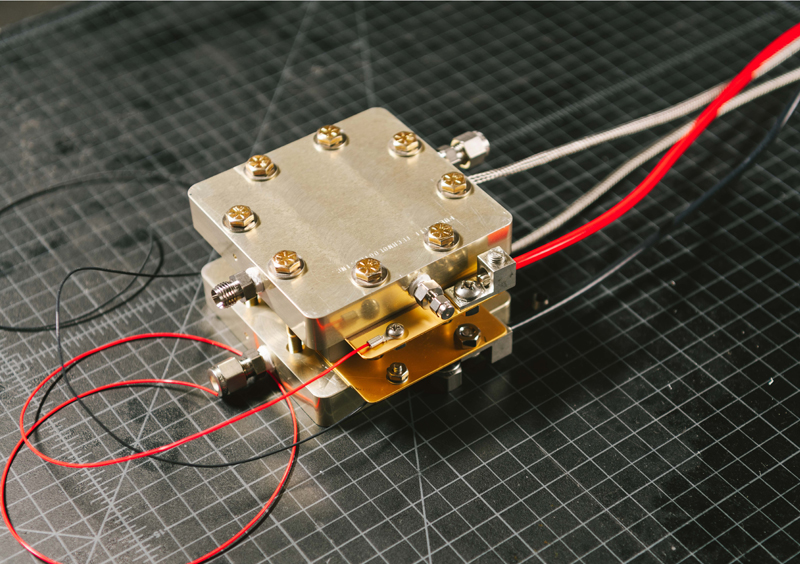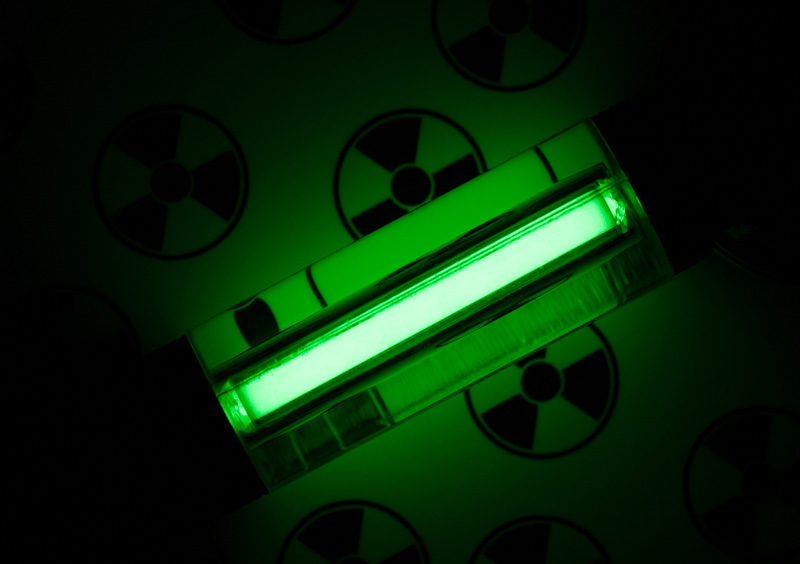Scientists at Los Alamos National Laboratory developed a major advancement in quantum dot technology that promises to significantly enhance solar energy conversion, photodetection, and photochemical applications, paving the way for more efficient energy harvesting and utilization.
“Our work demonstrates how purely quantum mechanical spin-exchange interactions can be harnessed to enhance the efficiency of photoconversion devices or photochemical reactions,” says Victor Klimov, the team’s principal investigator at the Lab. “This not only deepens our fundamental understanding of quantum mechanical phenomena but also introduces a new paradigm for designing advanced materials for energy applications.”
Quantum dots are microscopic semiconductor crystals developed in the lab that share many properties with atoms, including the ability to absorb or emit light, a technology that Los Alamos researchers have spent nearly three decades evolving. Through carrier multiplication, in which a single absorbed photon generates two electron-hole pairs, called excitons, quantum dots have the unique ability to convert photons more efficiently to energy.
In this latest research, published in the journal Nature Communications, Los Alamos researchers improved this ability by introducing magnetic manganese impurities into quantum dots. This novel approach to highly efficient carrier multiplication leverages ultrafast spin-exchange interactions mediated by manganese ions to capture the energy of energetic (hot) carriers generated by incident photons and convert it into additional excitons.
Jungchul Noh, a postdoc on Klimov’s team and lead chemist on this project, is excited about the potential impact of this discovery.
“The ability to enhance charge carrier yield through spin-exchange carrier multiplication has far-reaching implications for a wide range of photoconversion technologies, from solar electricity and high-speed photodetectors to light-driven chemical synthesis,” Noh says.
A new mechanism for efficient charge generation
Unlike conventional carrier multiplication, which relies on impact ionization, spin exchange carrier multiplication exploits ultrafast bidirectional energy transfer between the manganese dopants and the intrinsic states of quantum dots. This process significantly increases the likelihood of generating multiple electron-hole pairs from a single photon absorption, resulting in enhanced photoconversion efficiency.
Los Alamos researchers verified the effectiveness of this process through optical spectroscopy and, notably, photocurrent measurements in a real-world photoconductive device, demonstrating its potential for practical applications.
Through years of research, Los Alamos scientists found that traditional carrier multiplication is constrained by the rapid cooling of hot carriers via phonon emission, which competes with impact ionization, the primary mechanism driving conventional carrier multiplication.
The research team circumvented this limitation by incorporating manganese dopants into core-shell quantum dots, which feature an inverted band structure, where the shell material has a lower bandgap than the core. This unique design facilitates efficient localization of electrons and holes in the shell, optimizing carrier extraction for energy applications.
The key breakthrough lies in the spin-exchange interaction of these manganese-doped quantum dots, which enables:
- Ultrafast excitation transfer from hot carriers to manganese ions
- Spin-flip relaxation of manganese ions, releasing energy to generate additional excitons
- Significantly higher carrier multiplication efficiency compared with traditional quantum dots, with a carrier multiplication yield over four times greater than for undoped quantum dots
Potential impact
With its potential to significantly impact solar energy conversion, photodetectors, and photocatalysis, this research marks a major step toward the development of next-generation quantum-based energy technologies.
To assess the practical applicability of this technology, researchers tested the quantum dots in photoconductive devices. These devices demonstrated a sharp enhancement in photocurrent generation immediately above the spin-exchange carrier multiplication threshold, defined by the energy of the manganese ion’s spin-flip transition. This confirms that the increased carrier yield directly translates to improved device performance.
Power conversion efficiency simulations from the study predict that this method could achieve an efficiency increase of up to 41%, which is approaching the theoretical limit for fully optimized devices utilizing conventional carrier multiplication.
Additionally, this technology could play a crucial role in photochemical transformations, particularly those requiring multiple reduction and oxidation steps — for example, energy-intensive processes like ammonia production via nitrogen fixation, which currently consumes more than 2% of global energy.
Paper: “Highly efficient carrier multiplication in inverted CdSe/HgSe quantum dots mediated by magnetic impurities.” Nature Communications.
DOI: 10.1038
Funding: This work was supported by the Department of Energy’s Solar Photochemistry Program.
LA-UR-25-22910




